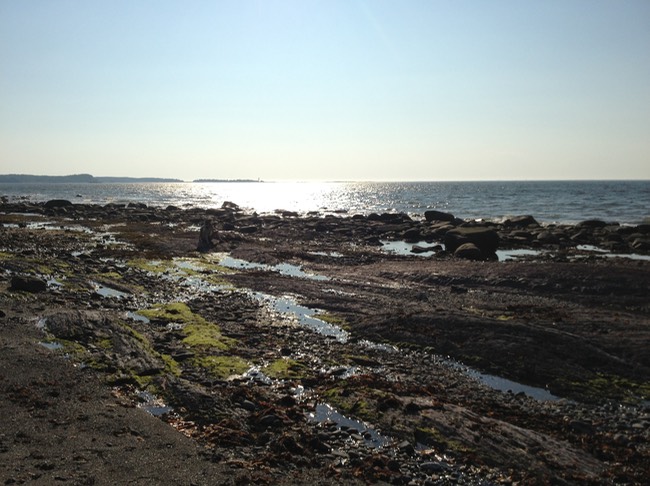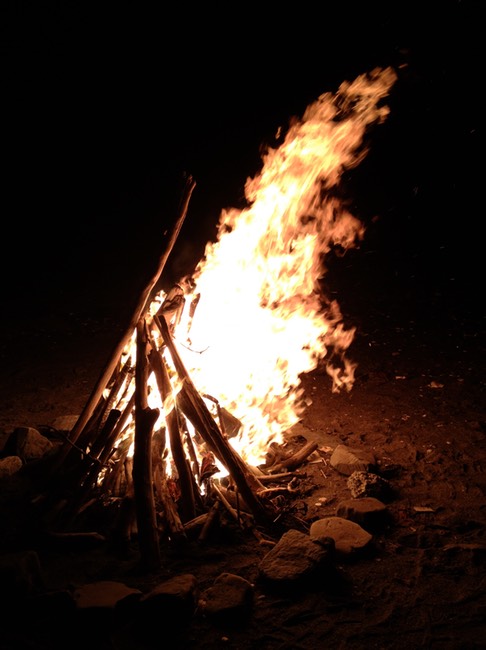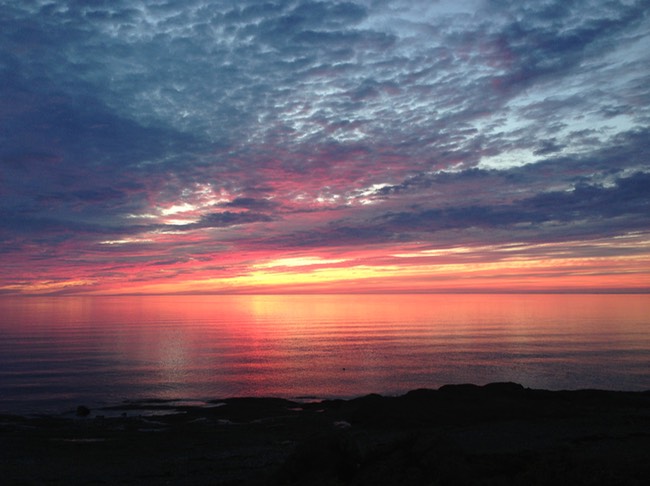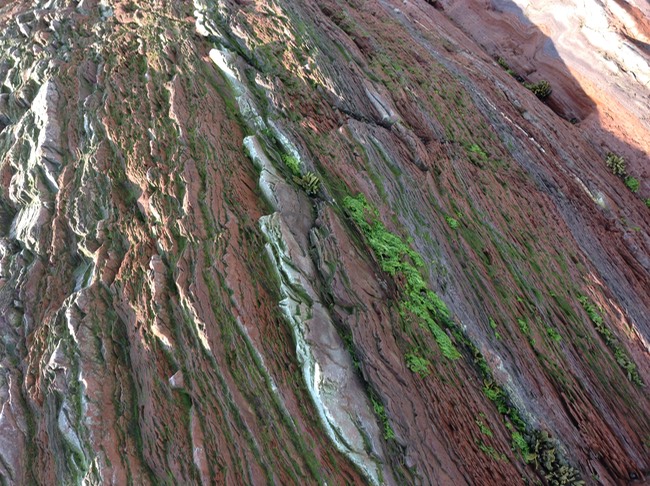
Métis-sur-Mer, Quebec, sits at the beginnings of the Gaspé Peninsula on the bank of the Saint Lawrence, where the river has essentially become the sea. This tiny summer community founded by Scots is an Anglo enclave in a sea of francophonie, and as we discovered after arrival, is universally called something that sounds more like a French painter than an aboriginal people. The community has a long history of cottagers from Montreal and other nearby areas, while the local francophones live here year round in the enclave of Les Boules. Most of the families have a long background in the community, and everyone knows one another.
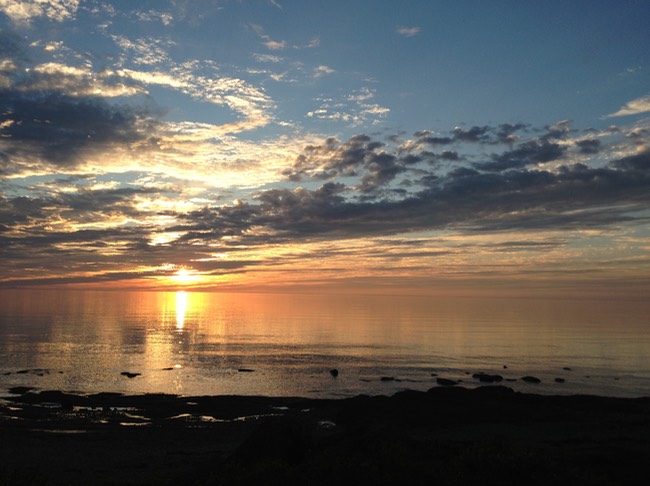
The river is at least 50 kilometres across at this point; you cannot see the other side. It looks, feels, and smells like the sea. The beach is rocky, with long expanses of smooth red stone interspersed with sandy, pebbled patches. When the wind is blowing hard, there is the constant roar of the waves washing over the rocks. We walked daily along the beach, while the young sons of our hosts played gleefully in the tidal pools; one day, we watched as a minke whale made its way along the shoreline. Some nights, we saw sunset light up the sky with streaks of red and purple, and others, we watched the fiery, deep red ball of the sun sinking below the horizon, leaving very little residue behind. Each night, our son built up a huge bonfire for us to enjoy. There was magic in the crackling wood, the colours deep within the flames, and the sparks flying upward into the deep starry night.
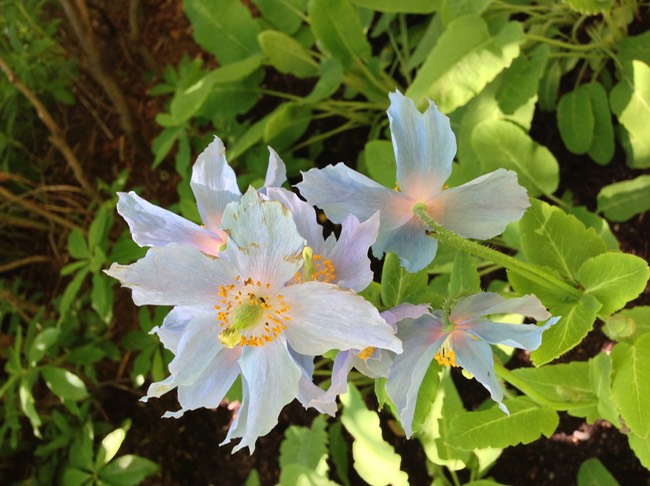
Away from the water, we visited the world-famous Jardins de Métis, a beautiful public landscape garden that hosts an annual festival featuring the conceptual gardens of designers from around the world. Both the designs of this year’s festival, and the permanent gardens themselves, were fascinating. We were fortunate to be there at the right time of year to see the famous blue poppies in bloom. These flowers with origins in the Himalayas find themselves right at home in the climate of the Gaspé, where humid days and cool nights are perfect for them.

Further along the peninsula, at the community of Baie-des-Sables, we found a roadside fromagerie run by a friendly and cheerful francophone woman. They had a number of nice country-style cheeses for sale, and of course, curds. Quebec cheddar is excellent, and fresh curds are a key ingredient in the quintessential Quebecois snack, poutine. Crisp hot fries, topped with a mound of squeaky fresh curds and warm gravy– heaven on a platter! We made ours with vegetarian gravy.
On the Matane road, we passed a ranch with a house built like a little castle, as though the rancher were Mad King Ludwig of Bavaria. But most of the houses around here are either large, Cape-cod style houses, or Quebecois cottages with the typical peaked, slanting roofs. One house in the village is built in 15th-century half-timbered style (not quite as out of place as the castle, but still a little odd in its surroundings).
One evening, the men of our party decided that it was necessary to swim in the river. They went out, doused themselves thoroughly in the frigid water, then returned for warming beverages of various kinds. The next morning, our host reported, he was greeted at the golf course with, “I hear you were in the river.” Metis is that kind of a community: intimate, personal, quirky. And perched quietly in a part of the country that is achingly, breathtakingly beautiful.
Photos: Métis shoreline; rock stratification on the beach; two sunsets; two sunsets; blue poppy; quintessential Quebecois houses; sunset
